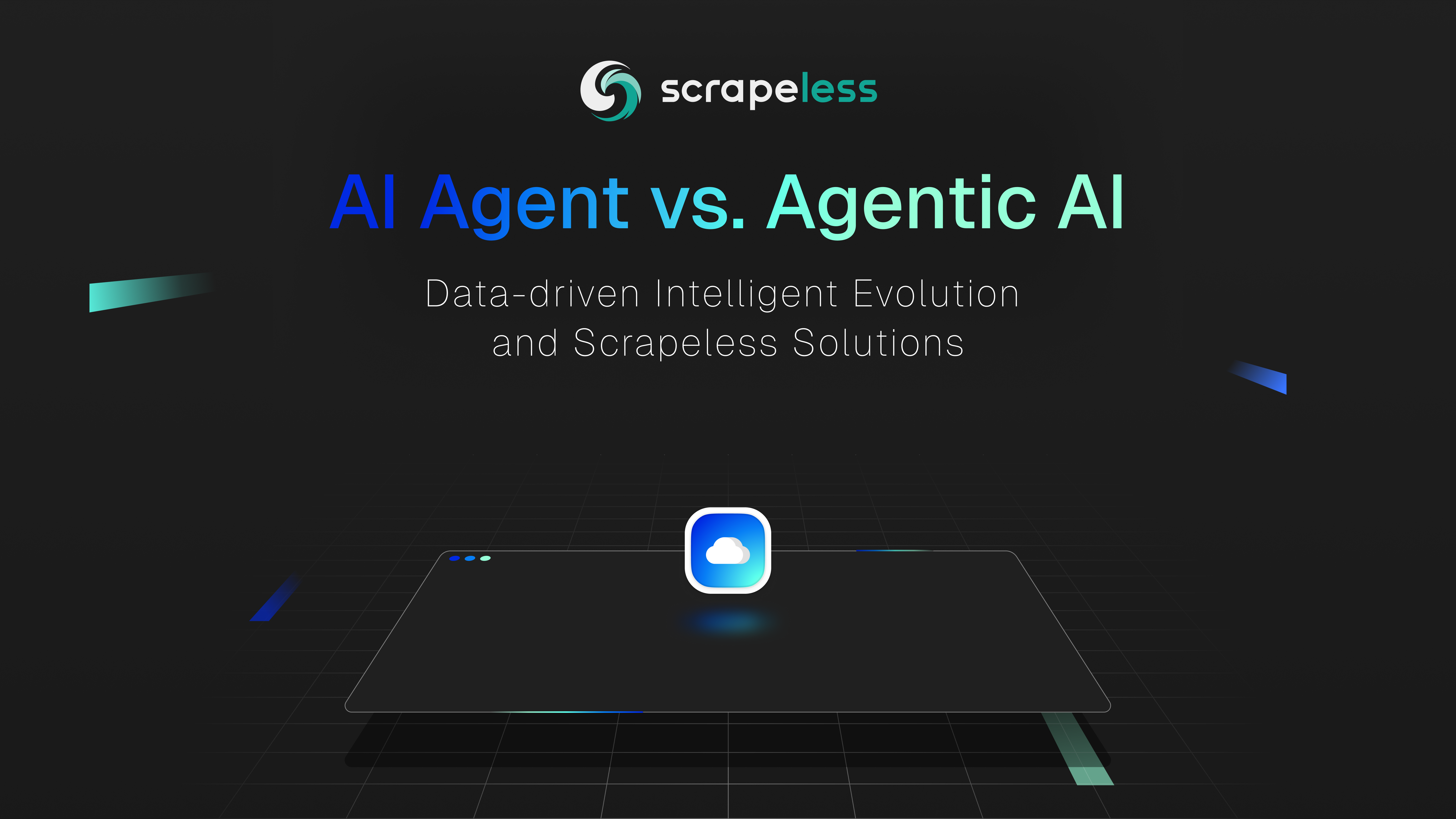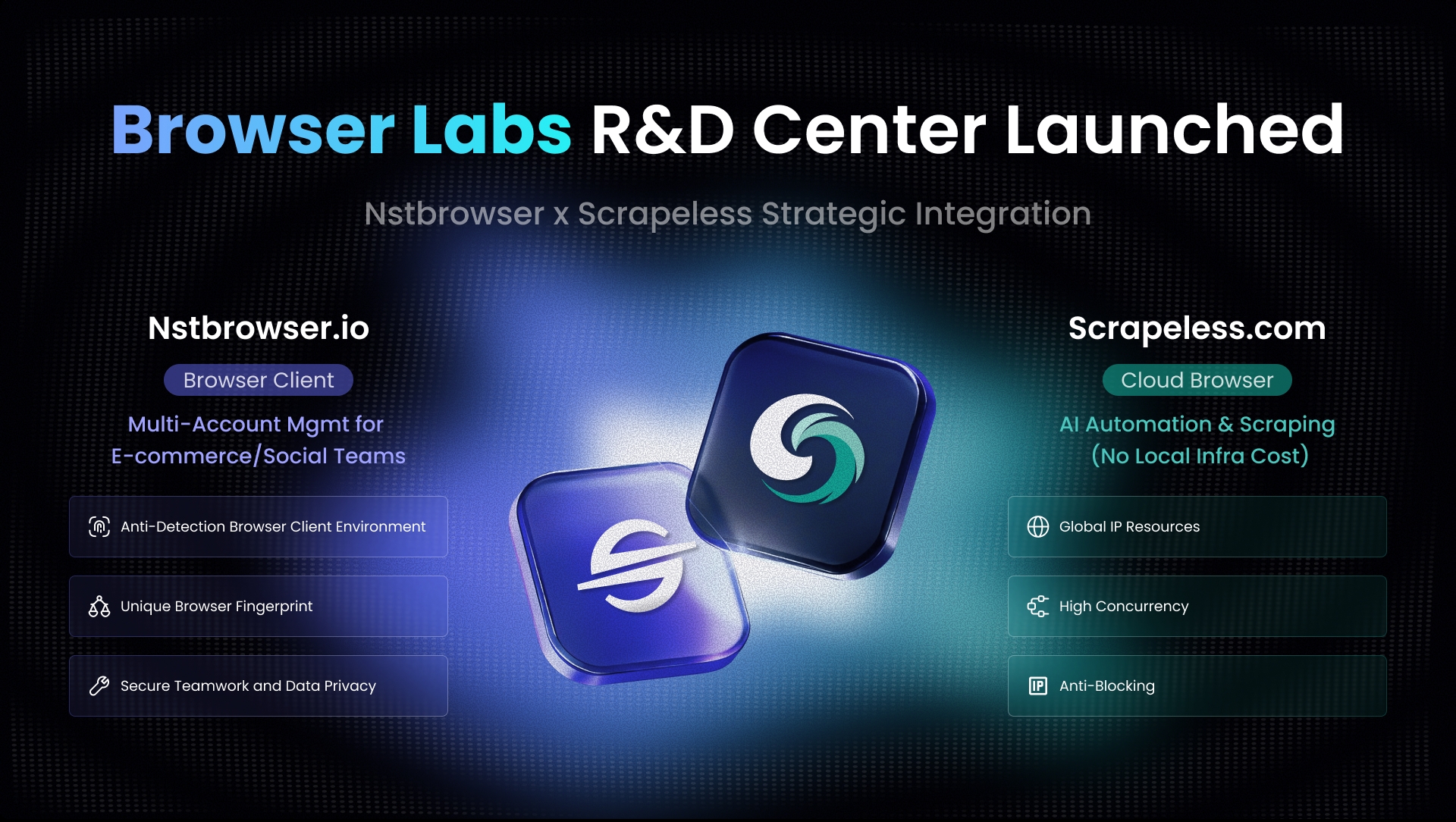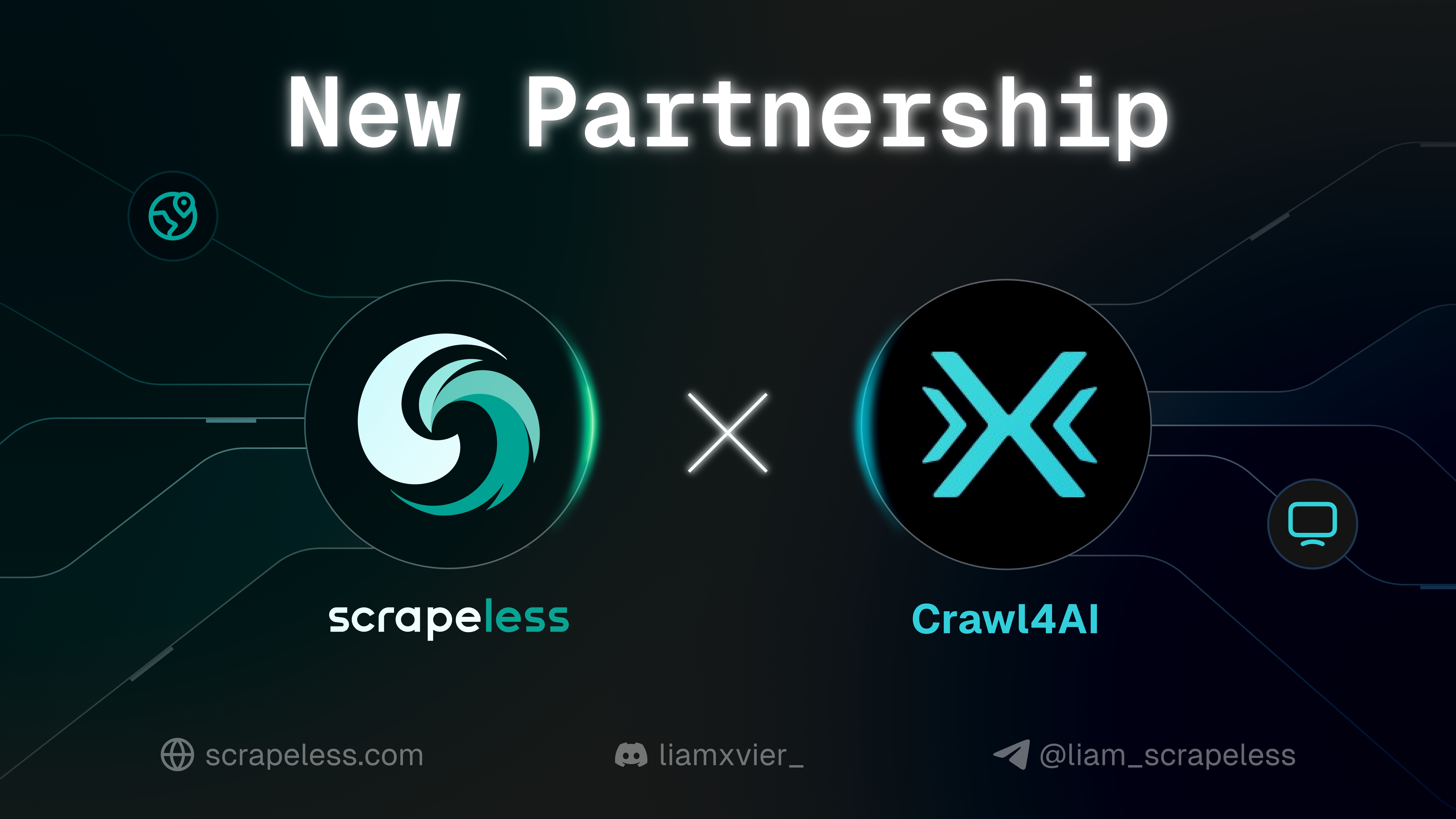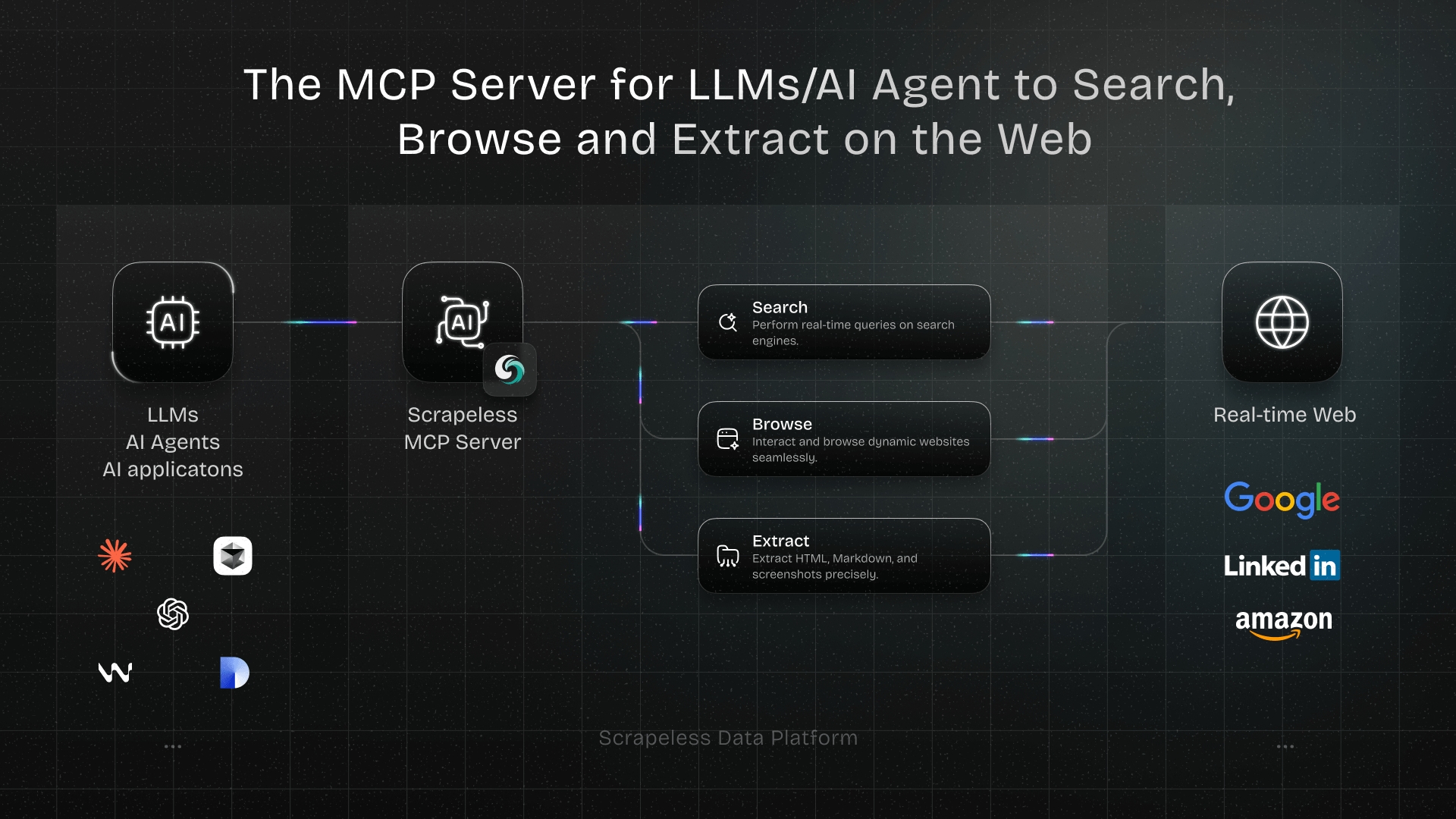AI Agent vs. Agentic AI: Data-driven Intelligent Evolution and Scrapeless Solutions
Specialist in Anti-Bot Strategies
In the rapidly developing field of artificial intelligence, two concepts are gaining increasing attention: AI agents and Agentic AI. While both are dedicated to automating tasks and enhancing decision-making capabilities, they differ in architecture, functionality, and application scenarios.
In this blog post, we will take a deep dive into the meaning of AI agents and Agentic AI, their differences, applicable scenarios, and advantages. In addition, we will explore how Scraping Browser can be an effective solution for both.
What is the AI Agent?
AI Agents are single - entity systems. They are augmented with Large Language Models (LLMs) and external tools. These agents are designed for task - specific autonomy, meaning they can perform a particular set of tasks with a high degree of independence. They are modular and reactive, and typically operate within narrow domains such as email triage, scheduling, and basic customer support.
What is the Agentic AI?
Agentic AI represents a paradigm shift. It involves multiple collaborating agents working together. These agents have features like dynamic task decomposition, persistent memory, and orchestration layers. Agentic AI is built to handle complex, multi - step workflows, such as coordinated research assistance, ICU decision - making support, and robotic orchard harvesting.
AI Agent vs. Agentic AI: Key Differences
| Comparison Dimension | AI Agents | Agentic AI |
|---|---|---|
| Definition & Core Concept | Single-entity systems based on LLMs and external tools, focused on task-specific autonomy (e.g., email classification, scheduling). | Multi-agent collaborative systems with dynamic task decomposition, persistent memory, and orchestration layers, designed for complex multi-step workflows. |
| Autonomy | High autonomy within specific tasks. | Greater autonomy across multi-step, cross-domain tasks. |
| Task Complexity | Single, narrow tasks (e.g., report summarization). | Complex, interdependent tasks (e.g., ICU decision support, robotic orchard harvesting). |
| Collaboration Capability | Operate independently without collaboration. | Multi-agent collaboration and information sharing. |
| Adaptability | Learn within a fixed domain. | Learn and adapt across environments. |
| Memory Mechanism | Session-level or limited memory. | Persistent and shared memory system. |
| Typical Use Cases | Email filtering, customer support chatbots, content recommendation. | Collaborative research assistant, adaptive game AI, coordinated robot control. |
| Core Challenges | Fragile long-term planning, hallucinations, limited causal reasoning. | Error cascades between agents, emerging instabilities, low communication transparency, ethical governance issues. |
| Future Directions | Proactive intelligence, continual learning, enhanced trust and security. | Multi-agent expansion, simulation-based planning, ethical frameworks, domain-specific optimization. |
Scraping Browser: Effective Solution for AI Agent and Agentic AI
The AI landscape is shifting—Agentic AI pushes autonomy and adaptability, while AI Agents stick to structured execution. As mentioned above, both AI Agent and Agentic AI have their own inherent challenges. How to ensure high accuracy and success rate during execution? Scrapeless Scraping Browser can be your best choice.
What is the Scraping Browser?
Scrapeless Scraping Browser is a high-concurrency automation solution for AI. A high-concurrency, low-cost, and anti-ban browser platform designed for large-scale data crawling, highly anthropomorphic.
Scraping Browser is a browser automation tool based on a cloud-based serverless architecture, designed to solve the three core problems of high-concurrency bottlenecks, anti-bot avoidance, and cost control in dynamic web crawling.
Core functions:
- Dynamic Stealth Mode support: Customize fingerprint parameters such as User-Agent, device information, locale, operating system, screen size, language, etc. to simulate real user devices; integrated CAPTCHA solver; support SDKs API, Node.js, Python SDK, etc., and implement advanced incognito mode through Scrapeless Chromium kernel.
- Global proxy and IP management
- 70 million+ residential IPs: covering 195 countries, automatic IP rotation, support routing by target website geographic location, and manual selection of target country/region.
- Transparent proxy cost: 1.26−1.80/GB (compared to competitors' $9.5+/GB), support for self-provided proxy.
- Automatic verification code cracking
- Built-in solutions: real-time processing of reCAPTCHA, Cloudflare Turnstile/Challange, AWS WAF, DataDome, etc.
- Human-computer interactive debugging, intuitive testing of failures and errors, analysis of user behavior and interaction through Live URL, and proxy traffic monitoring and real-time optimization of proxy traffic.
- Replay the session through Session Replay to fully check the executed operations and network requests.
Why Scrapeless Scraping Browser works well for AI Agent and Agentic AI?
Through a deeply customized Chromium kernel and a global proxy network, Scraping Browser can simulate highly anthropomorphic user behaviors in headless mode and run hundreds or even thousands of browser instances in batches. Whether it is an AI agent that performs a single task or an Agentic AI system that coordinates multi-task processes, Scrapeless can achieve more stable, efficient, and scalable data interaction.
The tool supports one-click access to mainstream automation frameworks such as Puppeteer and Playwright, and is easy to use out of the box. Through built-in verification code cracking, dynamic fingerprint control, and session replay mechanisms, it not only helps AI systems improve task success rates, but also provides key support for debugging and behavior analysis. For building intelligent systems with real Web perception capabilities, Scraping Browser is a key bridge connecting AI and the real network world.
Scrapeless Scraping Browser provides powerful data crawling and anti-blocking functions to help AI Agents complete complex browser automation tasks. It supports multi-task parallel processing and is an ideal tool for building intelligent agent systems and AI-driven applications. Users do not need to build automation infrastructure from scratch, just focus on AI applications, and Scrapeless can easily handle all complex problems.
In addition, in order to make Scraping Browser better adapt to AI tools and agent services, Scrapeless integrates cloud-hosted AI Agent solutions such as browser use and computer use; and integrates AI frameworks such as LangChain to achieve highly autonomous operation processes.
The Bottom Lines
AI agents and Agentic AI are two completely different but powerful concepts in the field of artificial intelligence. They each have unique characteristics, applicable scenarios and advantages, but also face challenges in data access and browser automation.
Scrapeless Scraping Browser has become an ideal solution for AI agents and Agentic AI with its high concurrency, anti-blocking and cost-effective features, as well as seamless integration with AI frameworks. As the field of AI continues to develop, Scraping browsers will play a key role in helping these AI systems get the data they need to achieve optimal performance.
At Scrapeless, we only access publicly available data while strictly complying with applicable laws, regulations, and website privacy policies. The content in this blog is for demonstration purposes only and does not involve any illegal or infringing activities. We make no guarantees and disclaim all liability for the use of information from this blog or third-party links. Before engaging in any scraping activities, consult your legal advisor and review the target website's terms of service or obtain the necessary permissions.



